One of math teacher Allison Kristal’s most vivid memories from high school was when she convinced her teacher Jessica Crabtree to let Kristal give her a makeover during class, after which Crabtree paraded around the room in Kristal’s three-inch platform shoes.
Six years after graduating from Redwood a year early in 1998, Kristal returned to Redwood at age 22 to teach math. She has been working at Redwood for the past ten years and is one of six alumni teachers currently teaching at Redwood.
The other five alumni teachers include Melissa Boles, Jonathan Hirsch, Amy Mastromonaco, Jessica Crabtree, and Karen Murk, who each specialize in diverse fields of education.
Several teachers, including Boles, said that there are many advantages to teaching at the high school they attended.
“The primary advantage is that I know the community and the culture here,” said Boles. “I know what [students] want out of [their education] from here. I know what the parents expect. I know what the school expects and I feel really comfortable being here.”
Hirsch also thinks that the largest advantage of being an alumnus teacher is the level of familiarity with the community, school values, and the level of emotional investment that makes him care a little bit more about teaching than if he taught at a different school.
“I had very fond memories of Redwood and was motivated to give back to the community that I felt like had given me a great deal. Yet I was also motivated to some degree by negative experiences in the classroom, of which there were only a few, but they helped me clarify what [kind of] teacher I wanted to be,” Hirsch said.
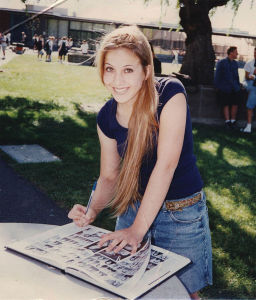
Hirsch said he has noticed a change in students during his time teaching, saying that Redwood students have gradually become more academically literate and motivated, which makes teaching more enjoyable for him. Although he thinks of these changes as positive, Hirsch also believes that there are tradeoffs.
“There is the perception of an ever narrower funnel through which students feel pressured to travel into an ever narrower set of post high school options,” Hirsch said. He thinks that generally students view highly selective colleges as the only acceptable path to take post-graduation.
Boles said that she has also noticed a change, “I don’t remember anyone talking about colleges before second semester of junior year and that’s different now. I hear [students] talk about colleges at a much younger age than I remember my peers having those conversations.”
Mastromonaco said that she had been talking with an eighth grade girl from Kent Middle School, describing all the clubs at Redwood, when the girl asked if the clubs would look good on her college application.
“I never thought about that as an eighth grader. I kind of surmised that the pressure has increased even more about where [students] are going to college,” said Mastromonaco.
Although she also senses there is more academic pressure than during her years at Redwood, said she does not believe that student life has changed a lot since she attended Redwood.
“There are some threads that connect my experience very tightly as a student to my experience now and a lot of those are the people that are around,” Mastromonaco said, referring to P.E. teacher Mike Dibley as a Redwood institution, and adding that many teachers she had are still educators at Redwood.
“I was talking to some kids and they’re like, ‘Oh, we were hanging out in the CVS parking lot,’ it used to be Long’s back in my day, but we did that too!” she said.
Mastromonaco, who graduated in 2005 and currently teaches Integrated Science 3-4, thought she might work in the medical field, adding that Honors Biomed was pivotal to her passion in the Sciences, but her strong desire to work with students and the creativity she anticipated to find in the classroom ultimately dissuaded her from going into medicine.
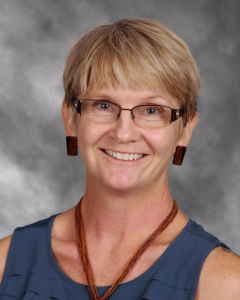
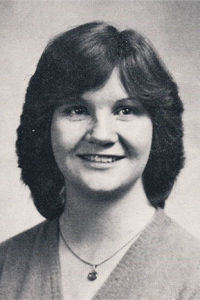
Unlike Mastromonaco, Murk, a graduate of 1982, who currently teaches Statistics and AP Calculus AB, decided she wanted to be a teacher a year after graduating college.
At first, Murk had no desire to work at Redwood, but returned to teach in 2004 because she was interested in Redwood’s schedule, which she believes is very conducive to teaching and learning math.
Crabtree, who currently teaches Honors Precalculus and AP Calculus AB, grew up believing she would work for a corporation, like her father. However, when she worked for her father’s company for two summers in college, she discovered she disliked it. She found the days long, the work boring, and would come home from work too tired to do anything.
A Redwood graduate of 1985, Crabtree attended UC San Diego where she majored in mathematics. She was hired by the math department at UCSD during her junior and senior years to tutor middle school students and ended up becoming a teacher due to her positive experiences at UCSD.
Eight years after Crabtree graduated, Boles, who teaches Astronomy and Integrated Science 1-2, completed her senior year at Redwood in 1993 and got a bachelors in Geological Sciences at the University of Washington. Although her job as a fisheries biologist was enjoyable, she soon found she wanted be around people and decided to get a graduate teaching degree five years out of college.
“I wanted to be able to interact with people and I wanted to be able to
have more exposure to more science because when you get into a career, you get so isolated in your studies,” Boles said.
When she first became a teacher, Boles was living in New York City where she worked at a high school in a low income area that had a four-year graduation rate of 27 percent, according to Boles. She returned to the Bay Area because of family and knew that she wanted to teach in the Tam District.
“The kids [in New York] were wonderful, but their world was very different, and being able to stay out of the workforce long enough to finish high school was not always an option for them, so it was a difficult teaching experience,” said Boles.
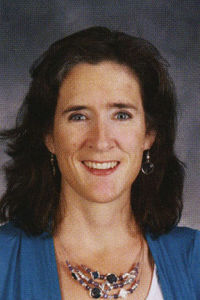

Contrary to Boles, Hirsch discovered at a young age that he enjoyed teaching.
“I had a passion for learning and I love school. I always liked helping [people] to gain a better understanding of things, whether it was my seat neighbor in chemistry or teaching the little kids down the street how to hit a baseball, I can look back now and say that was always gratifying,” Hirsch said.
When Hirsch was 25, he discovered a time capsule that he had created when he was 8 years-old that said,
“When I grow up, I want to be a college football player.” From the ages of 8 to 21, he never had a clear vision of what he wanted to be, but he had a few vague ideas: his parents were lawyers and he liked chemistry.
During his junior year at Pomona College, Hirsch began coaching football at a local high school after injuring his back at the end of his sophomore year. He fell in love with coaching and realized that he wanted to become a teacher and a coach.
Hirsch graduated in 1994 and has been teaching at Redwood for 11 years. He coached Redwood’s football team for two seasons (May 1998-November 1999), and currently teaches World Cultures and Geography, Social Issues, Psychology, and Street Law.
Hirsch said that he believes that his positive high school experience affected his decision to become a teacher––Redwood was “home” to him, and he dreamed of coming back once he became a teacher.
“I think that I had some very passionate, caring, and nurturing teachers that, combined with other factors, gave me a sense that teachers were people that cared about their community and were capable of [making] positive changes,” Hirsch said.
Unlike Hirsch, Kristal never decided to become a teacher, but rather was pulled in. After graduating from UC Santa Barbara in 2002, Kristal took a year off. She applied to law school thinking that she would enjoy being a lawyer because she is quick on her toes and skilled at problem-solving.
Kristal attended law school at Golden Gate University, which she left after three months because she said she found it was rigid and boring.
“When I got there, I felt lost in this sea of khaki,” she said, laughing, referring to the bland attire of the law students.
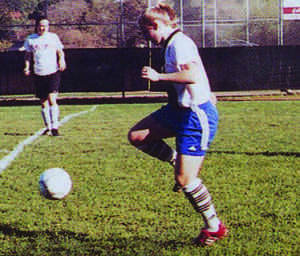
“I have never quit anything, but I had to acknowledge that I was not happy. And that [law] was something that I did not want to pursue,” said Kristal.
After leaving law school, Kristal applied for a job editing wedding videos because she wanted a more creative job. She thought about teaching student filmmaking classes and was a substitute teacher at Drake and Tam.
Crabtree, who had been Kristal’s Precalculus teacher, was having complications with her pregnancy and went on leave. Kristal had a day’s notice before taking over for Crabtree at Drake, where Crabtree was working. When Crabtree returned, math teacher Heather Curtaz was on maternity leave, so Kristal took over for her at Redwood in the spring of 2005 on an emergency 30-day teaching credential.
At the end of the year, Nancy Neu, the principal at the time, offered Kristal a full time job, but Kristal declined. Julianne Schrick, then department chair, asked Kristal again and this time Kristal accepted the job. Kristal finished her teaching credential at Dominican University while teaching at Redwood.
Kristal currently teaches Geometry and a Math Academic Workshop.






